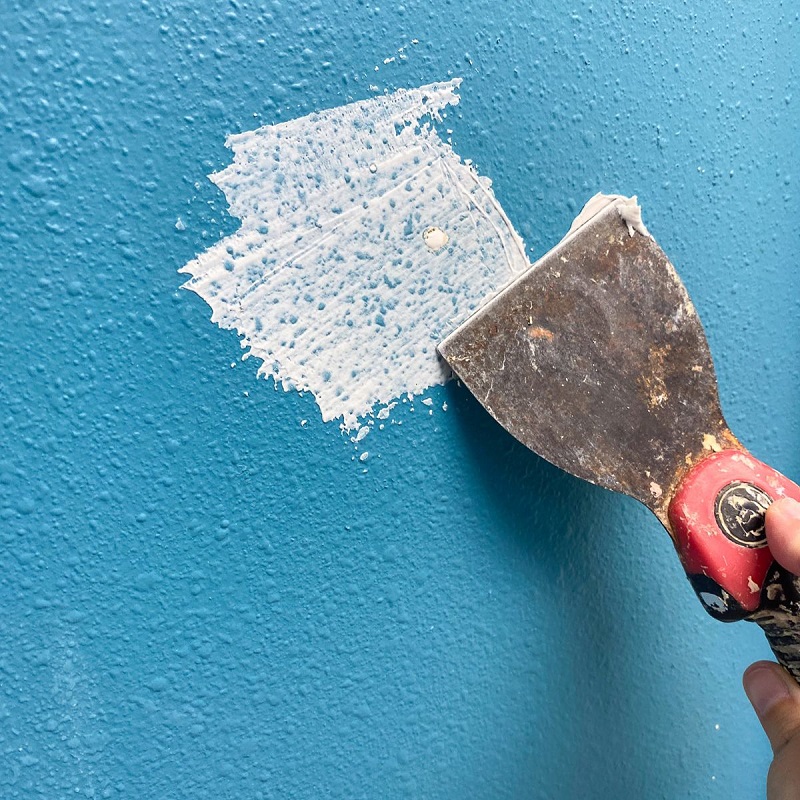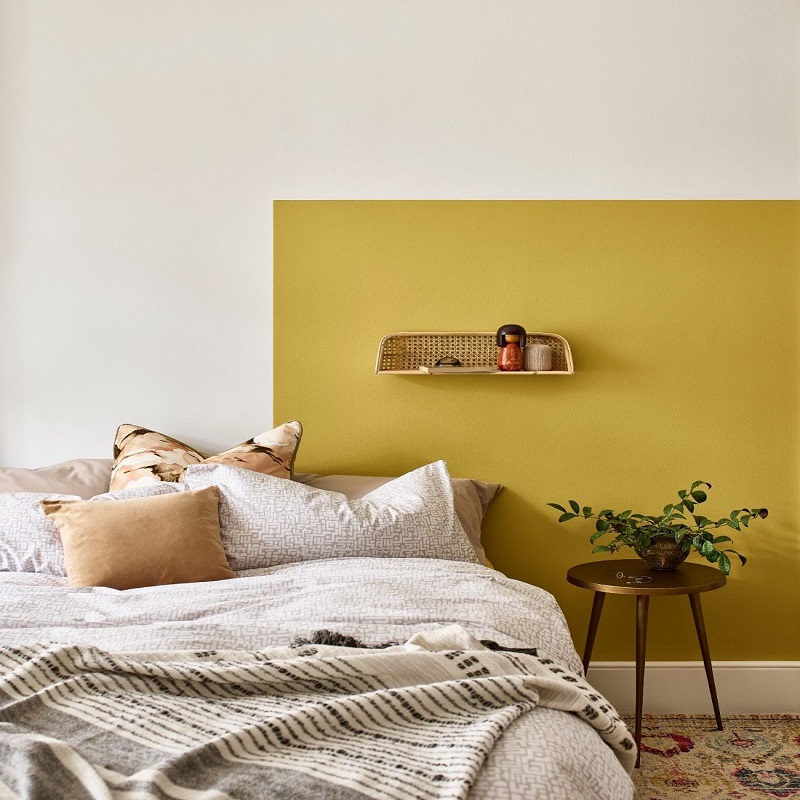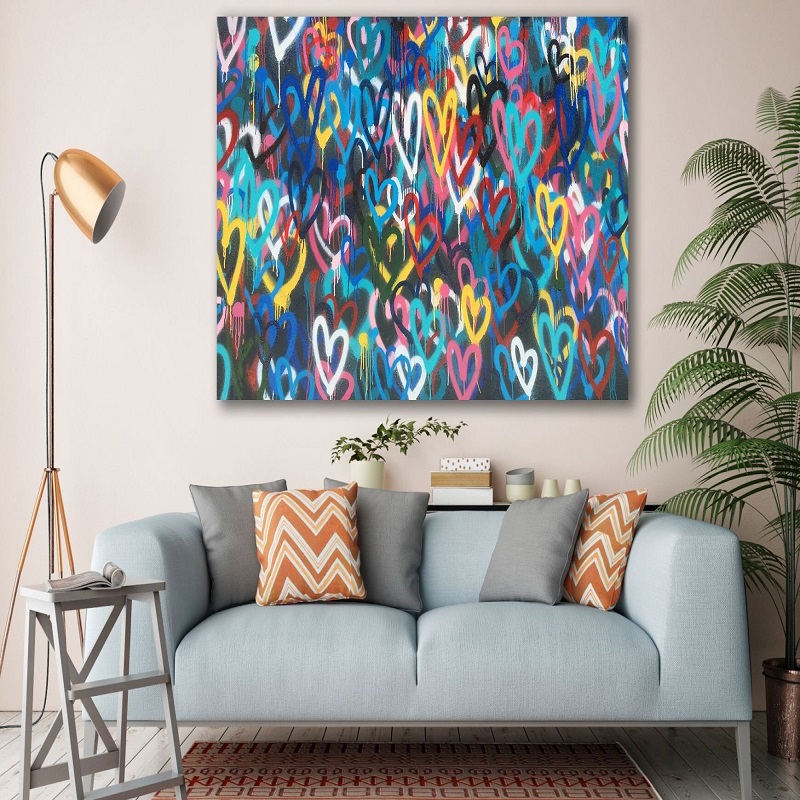How to fix paint peeled off wall? Over time, paint on walls can peel or chip, leaving unsightly marks and affecting the overall appearance of a room. Restoring peeling paint is essential to maintain a fresh and inviting atmosphere in any space. Fortunately, repairing peeling paint can be a straightforward process with the right tools and techniques. In this comprehensive guide, we will explore the step-by-step process of fixing peeling paint on walls, from preparing the surface to repainting and ensuring a seamless finish. Let’s delve into the world of wall restoration and discover how to effectively address peeling paint issues.

Surface Preparation:
- Evaluate the Damage:
Assess the extent of the peeling paint by gently pressing on the affected area. Determine whether the damage is limited to small sections or if it requires a more extensive repair. - Safety Precautions:
Before beginning any work, ensure you are wearing appropriate protective equipment such as safety glasses, gloves, and a dust mask or respirator to protect yourself from dust, debris, and potential chemical exposure. - Clear the Area:
Remove furniture, decorations, and any obstacles near the peeling paint area. Cover the floor and nearby objects with drop cloths or plastic sheets to protect them from dust and paint splatters.
Removing Loose Paint:
- Scrape the Loose Paint:
Using a paint scraper or putty knife, gently scrape away any loose or peeling paint from the affected area. Be cautious not to damage the underlying wall surface or create further cracks or indentation. - Sand the Edges:
Smooth any rough or uneven edges around the garage wall paint materials using a fine-grit sandpaper. This helps create a smooth transition between the repaired area and the intact paint, ensuring a seamless finish after repainting.
Repairing the Surface:
- Fill in Gaps and Cracks:
Using a high-quality patching compound or spackle, fill in any gaps or cracks in the wall surface. Apply the compound with a putty knife and smooth it out evenly. Allow it to dry as per the manufacturer’s instructions. - Sand and Feather the Patch:
Once the patching compound is dry, sand it down gently using a fine-grit sandpaper to create a smooth and even surface. Gradually feather the edges of the patch to blend it seamlessly with the surrounding area.
Priming and Repainting:
- Prepare the Priming Surface:
Before applying paint, prime the repaired area and the surrounding surface to ensure proper adhesion and uniformity. Use a high-quality primer suitable for the surface material and allow it to dry completely. - Paint Application:
Select a paint color that matches the existing wall color or opt for repainting the entire wall for a consistent finish. Apply the paint using a high-quality brush or roller, starting from the edges and working your way inward. Apply multiple coats as needed, allowing each coat to dry before applying the next. - Blending with the Existing Paint:
To achieve a seamless finish, feather the paint at the edges of the repaired area to blend it with the existing paint. This technique creates a gradual transition, minimizing the appearance of any repaired spots.
Final Finishing and Clean-up:
- Inspection:
Once the paint has dried, carefully inspect the repaired area for any imperfections or unevenness. Sand and touch up the area as necessary to ensure a smooth and flawless finish. - Clean-up:
Clean any debris, dust, or paint splatters from the surrounding area and furnishings. Remove drop cloths or coverings and return the room to its original state.
What are the good-looking styles of wall paint?
Wall paint is a fundamental element of interior design, setting the tone and ambiance of a room. With endless color options, finishes, and techniques, choosing the right wall paint design can elevate the overall aesthetic and style of your space. From bold and vibrant colors to subtle textures and patterns, there are numerous options to consider when selecting a paint design that suits your personal taste and complements your décor.

Solid Color Designs:
- Bold and Vibrant:
Choose bold and vibrant hues to make a statement and add visual interest to a room. Use colors such as deep blues, rich reds, or vivid yellows to create a focal point or energize the space. - Subtle and Serene:
Opt for soft and soothing shades, such as light pastels or neutral tones, to create a tranquil and serene atmosphere. These colors work well in bedrooms, living rooms, or any space where relaxation is desired.
Accent Wall Designs:
- Contrasting Color:
Create a focal point by painting a single wall in a contrasting color. This design draws attention to the wall, adding depth and visual interest to the space. - Textured Accent Wall:
Consider adding texture to an accent wall by using techniques such as faux finishes, textured wallpaper, or plastering. These options add dimension and create a unique visual appeal.
Ombre Effects:
- Gradient Ombre:
Achieve a seamless blend of colors using an ombre effect. Start with a deep hue at the bottom and gradually transition to a lighter shade as you move up the wall. This technique creates a captivating and harmonious color flow. - Horizontal Ombre:
For a contemporary twist, create a horizontal ombre effect. Begin with a darker shade on one side of the wall and fade to a lighter tone on the opposite side. This design adds a modern touch and can visually expand a room.
Stenciling Designs:
- Moroccan-inspired Stencils:
Add an exotic touch to your walls by using Moroccan-inspired stencils. This design adds intricate patterns and visual appeal to create a captivating and unique backdrop. - Floral Stencils:
Enhance a room with the beauty of nature by incorporating floral stencils. These designs bring life and charm to walls, creating a fresh and inviting atmosphere.
Advantages of wall paint decoration
Transformative Power:
-
Enhanced Aesthetics:
Wall paint has the power to dramatically change the appearance of a room. A fresh coat of paint can breathe new life into dull walls, instantly revitalizing and brightening the space, and creating a welcoming ambiance. - Mood and Atmosphere:
Different paint colors evoke different emotions and set the tone for a room. Warm hues like red and orange convey energy and enthusiasm, while cool tones like blue and green promote tranquility and relaxation. Wall paint allows for the creation of specific moods and atmospheres tailored to the function of each space.

Freedom of Choice:
- Vast Color Options:
Wall paint offers an extensive range of color options, allowing individuals to fully express their creativity and personality. Whether one prefers vibrant and bold hues or subtle and calming tones, there is a color palette for every preference and style. - Customization:
Wall paint creates the opportunity to customize spaces and make them truly unique. Using various paint finishes, textures, and patterns, individuals can infuse their personal style and create distinct visual statements that reflect their taste and aesthetics.
Versatility:
- Complementing Décor:
Wall paint serves as a backdrop and complements other elements in a room such as furniture, artwork, and accessories. It allows for cohesive design and seamless integration of different décor elements, creating a harmonious and visually pleasing ensemble. - Accentuation:
Wall paint allows for the creation of focal points and accent walls. By highlighting specific walls or architectural features, one can draw attention to desired areas and add dimension and visual interest to a space.
Conclusion:
Restoring peeling paint on walls is a manageable task with proper preparation, repair techniques, and painting methods. By carefully evaluating the damage, removing loose paint, repairing the surface, priming, and repainting, you can effectively address bedroom geometric wall paint issues and restore the wall’s appearance. With attention to detail and patience, you can achieve a seamless finish that seamlessly blends with the existing paint. By following the steps outlined in this comprehensive guide, you can restore the beauty and integrity of your walls, creating a fresh and inviting space.

